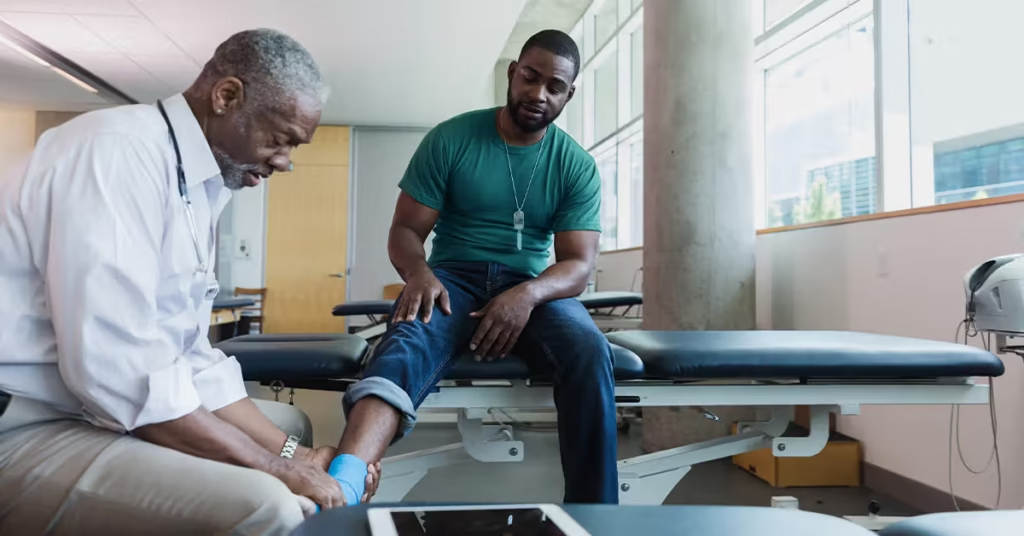An orthopedic surgeon plays a key role in diagnosing and treating sports-related injuries. Whether managing acute trauma or chronic overuse conditions, they use a comprehensive approach to help athletes return to their peak form. Below is some information that explores the diagnostic process and treatment plans employed by orthopedic specialists for common sports injuries.
Steps to Diagnose Sports Injuries
Accurate diagnosis forms the foundation for evaluating a sports injury. An orthopedic surgeon reviews the patient’s medical history to pinpoint the nature of the injury and its impact. They note when the injury happened, any prior conditions, and symptoms like pain or swelling.
The next step involves a physical examination of the impacted area. This assessment often includes evaluating range of motion, strength, stability, and visible abnormalities. A surgeon may also rely on imaging techniques, such as X-rays, MRIs, or ultrasounds, to investigate the internal structures of joints, muscles, and bones. Advanced diagnostics like arthroscopy may be used to look directly inside a joint for complex injuries.
Treatment Options for Sports Injuries
Orthopedic surgeons treat sports injuries using a range of methods. They prioritize non-invasive treatments whenever possible. Nonsteroidal anti-inflammatory drugs (NSAIDs) are often prescribed to reduce swelling and manage pain. These medications are used alongside other therapies to relieve discomfort without sedation. Physical therapy and rehabilitation exercises also form an integral part of recovery to improve mobility, strength, and balance. Personalized physical therapy plans can help prevent future injuries while optimizing recovery outcomes.
For soft tissue and cartilage injuries, surgeons may employ orthobiologics. These are naturally derived substances that promote regeneration and healing at the cellular level. Treatments such as platelet-rich plasma (PRP) injections or stem cell therapy stimulate tissue repair and enhance the body’s natural recovery process. These innovative therapies are becoming increasingly popular in both sports medicine and general orthopedics.
Surgical intervention is reserved for when conservative treatments fail or when severe injuries require repair. Procedures may focus on fixing fractures, restoring ligament integrity, or addressing joint damage. Minimally invasive techniques, like arthroscopy, are frequently utilized to reduce recovery time and minimize scarring.
Preventing Long-Term Complications
Sports injuries often require careful follow-up to monitor healing and prevent complications. Orthopedic surgeons collaborate with physical therapists and athletic trainers to track progress and implement changes when needed. Consistent rehabilitation helps reduce the risk of reinjury and maintains long-term joint health.
Orthopedic practices often emphasize functional training that mirrors an athlete’s sport. This approach promotes a safe return to activities while improving performance post-injury. Personalized recovery plans are designed to address the unique needs of each athlete and the medical team may employ bracing or taping for added joint support during the recovery phase.
Understanding the Role of an Orthopedic Surgeon
Orthopedic surgeons use advanced diagnostic tools and treatments to create personalized care plans for athletes. They address both injuries and overall health through methods like advanced imaging and regenerative therapies. The recovery process brings together medical expertise and tailored rehabilitation to deliver optimal results. Prompt evaluation and consistent follow-up help athletes return to sports safely and effectively.


